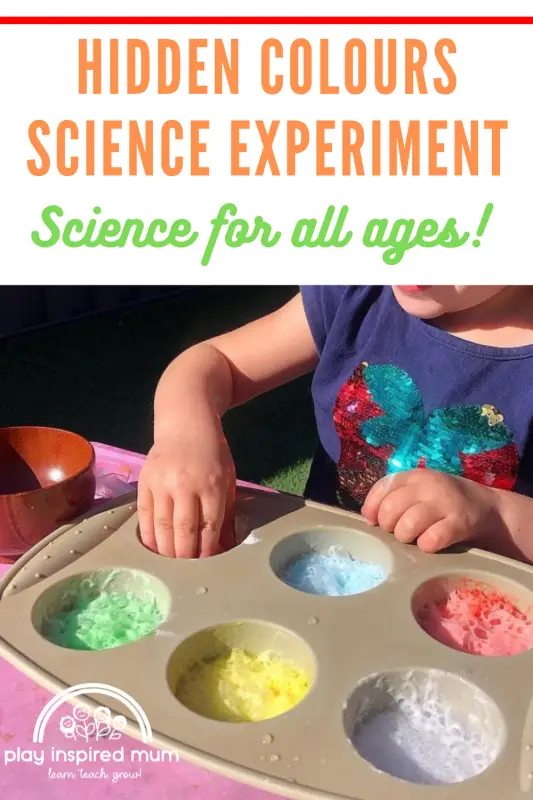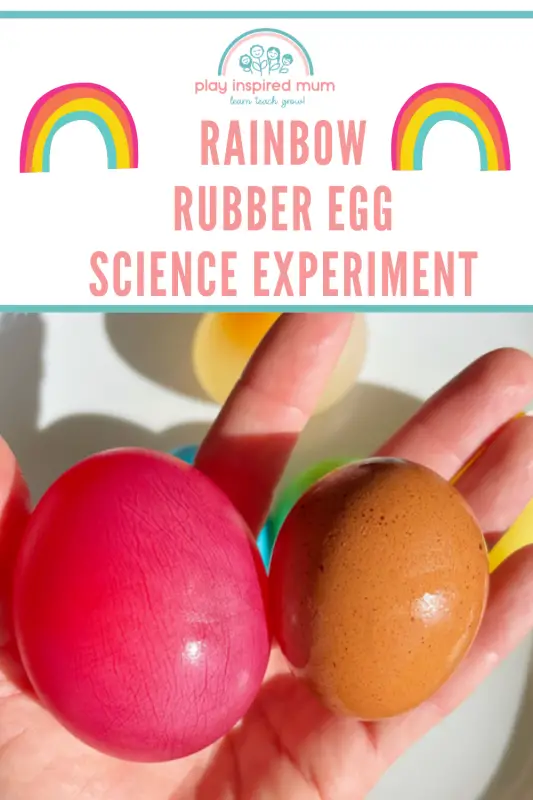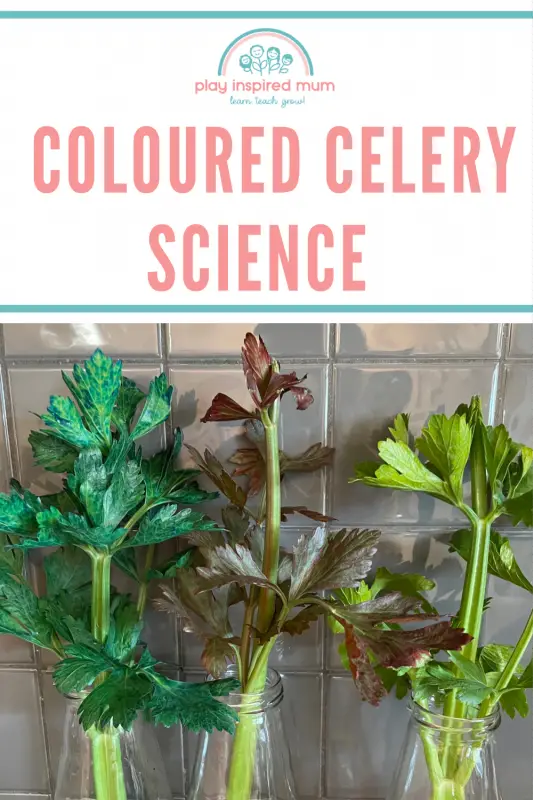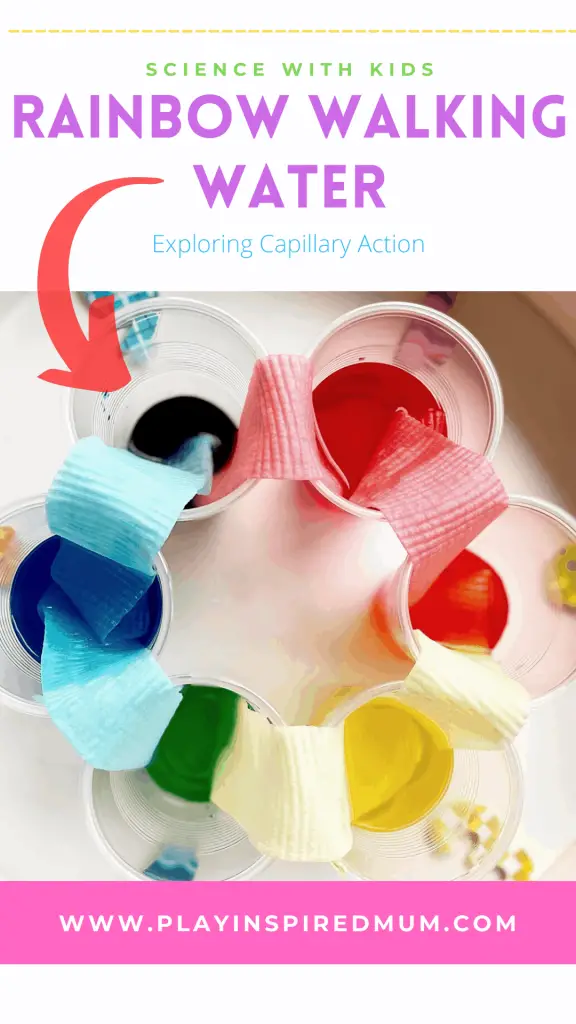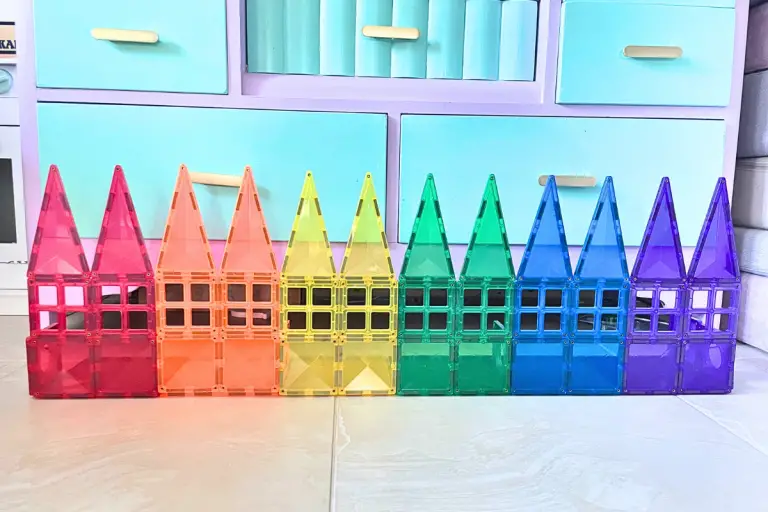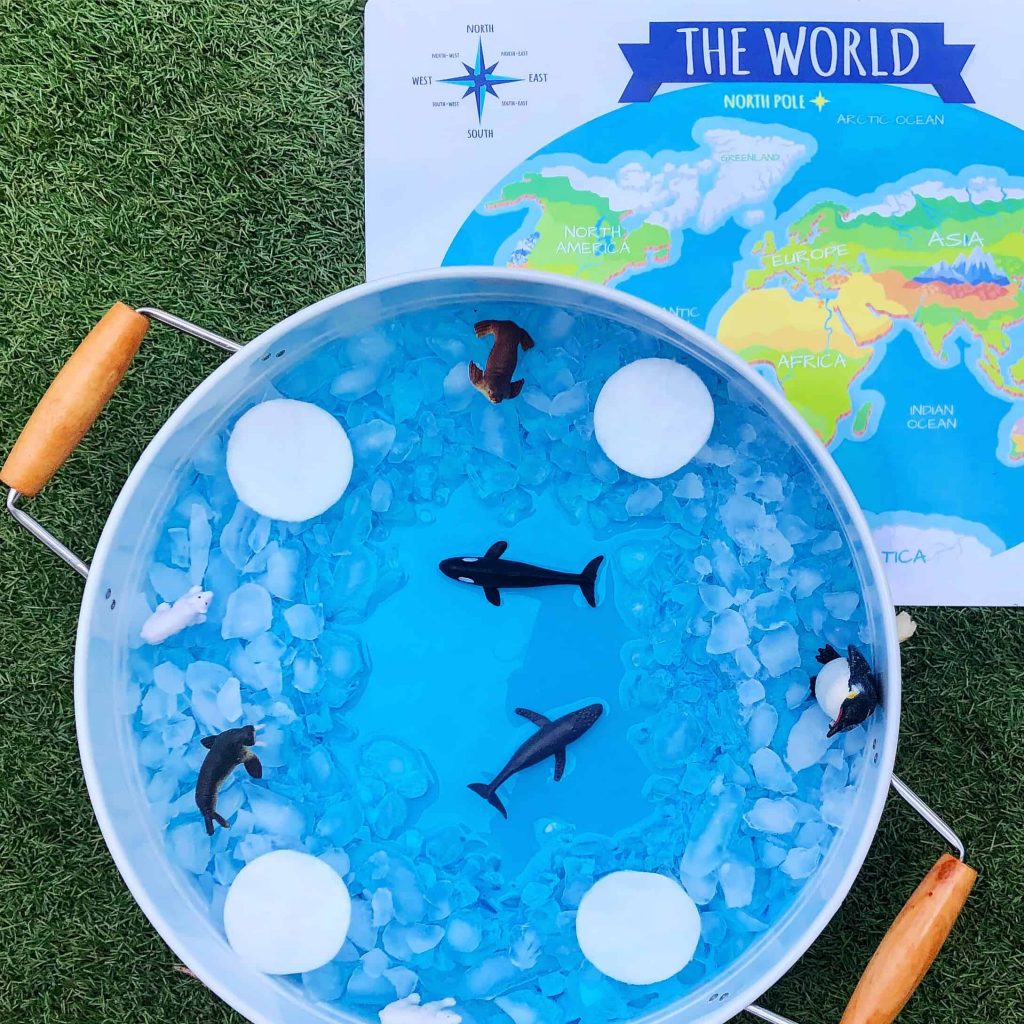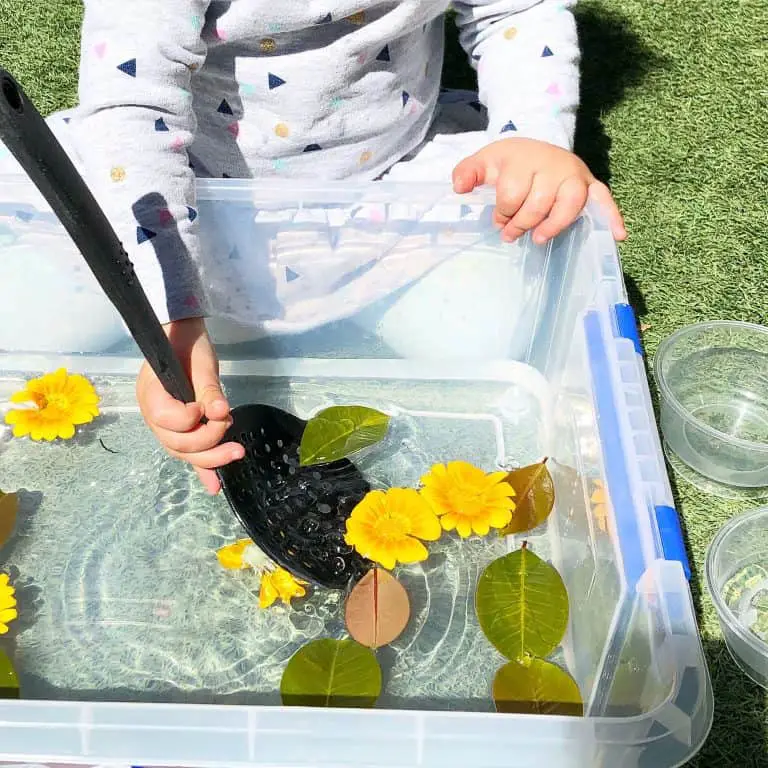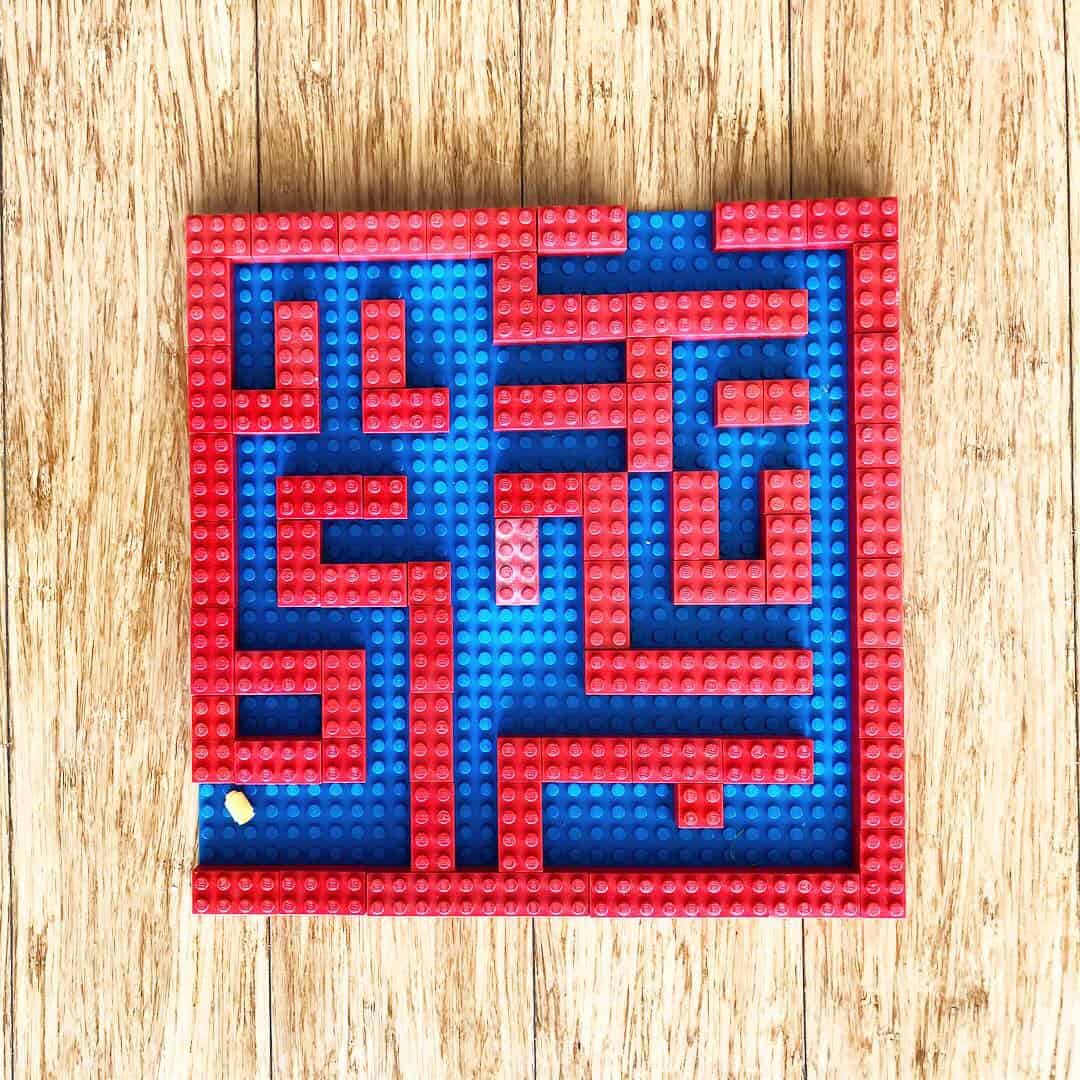Climbing Rainbow Science Experiment
Disclosure: This blog contains affiliate links which I may earn a small commission from if you purchase through them, at no extra cost to you.
A climbing rainbow is a fun and easy science experiment that helps explain the science behind capillary action. That is, all while creating a beautiful rainbow that literally moves before your eyes!
The process of capillary action helps water and other liquids move through small tubes or vessels, which is evident in nature every day.
By doing this fun science experiment, kids can see capillary action in action and learn more about how it works.
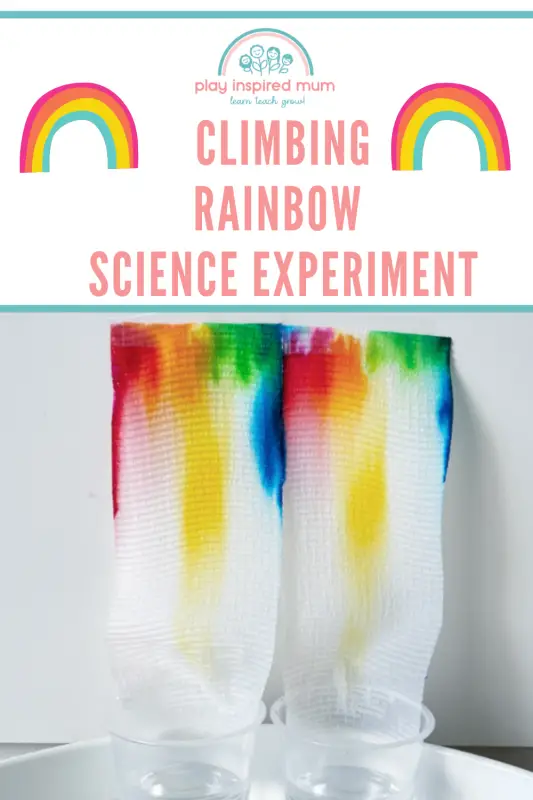
What you need for a climbing rainbow science experiment
The climbing rainbow science experiment requires only
- Sheet of paper towel
- Packet of markers in rainbow colours
- Cup of water
- Tape
We used Crayola Silly Scents markers as the colours are extremely vibrant and they smell amazing!

How to set up a climbing rainbow science experiment
- Cut the paper towel into two equal strips.
- Roughly a third the way up, use the markers to colour a rainbow from left to right. Starting at the left side of the paper towel, colour a section approximately 1cm wide and 2cm high in red. From here, continue with the other colours until a rainbow band is across the width of the strip.
- Submerge the bottom of the paper towel into the cup of water so the water is just below the rainbow.
- Secure the top of the paper towel to the wall or window with tape.
- Then watch the science happen!



How does the climbing rainbow science experiment work?
As the water begins to rise up through the paper towel, it draws the colour from the marker up with it!
The rainbow literally travels up the paper towel using a scientific process called capillary action.
Capillary action occurs because water molecules are attracted to each other and the narrow spaces between the fibers within the paper towel. The combination of these attractions works together to move the water up the paper towel.
When the water levels out, try experimenting with different heights of water in the cup. What happens if you elevate the bottom strip closer to the coloured section?
This climbing rainbow science experiment shows kids how easy it is to conduct simple experiments at home.
Get creative by trying different cups or containers, or taping more than two strips of paper towel on a wall! Here are some kids’ questions to prompt your climbing rainbow discussion:
Once you’ve finished observing the climbing rainbow the paper towel can be dried. We turned ours into a bookmark!

What is capillary action
Capillary action is the process that helps water and other liquids move through small tubes or vessels. It’s something you see every day in nature, and you can see it in action by doing a climbing rainbow science experiment!
Water molecules are attracted to each other and work together to move up the spaces between the fibers in the paper towel.
What kids should know before doing a climbing rainbow experiment?
This experiment does take time.
While it is an exciting process, it is a process that can be visited over a few hours before the rainbow would have made its way to the top of the paper towel.
Why not make some predictions as to how long you think the experiment will take?
For older children, why not make incremental predictions?

Variations of the experiment
This is such a simple experiment to set up.
The climbing rainbow could be used as a foundation for many variations.
Set up multiple variations, using the rainbow as a control to measure against and have fun testing different factors.
Colour the water
Add food colouring or other things to the water, which can be fun too.
Rather than colouring the paper towel, colour the water!
Use different markers
Will sharpies give a different result compared to washable textas?
Do different colours travel faster than others?
Different Volumes
Try doing climbing rainbow experiments with different containers and heights to see the impact these parameters have.
Hot or Cold
Will the temperature of the water make a difference to the speed at which the water travels?
Bubbles
Would the addition of some dishwashing liquid bare an impact on the end result?

Capillary action in nature
Capillary action is the process that helps water and other liquids move through small tubes or vessels. You see this every day in nature, as capillary action helps plants to get the water they need to survive.
By doing a climbing rainbow science experiment, you can see capillary action in action and learn more about how it works!
Plants rely on capillary action to get the water they need to survive. The water molecules are drawn up through the plant’s stem and into its leaves. This is called transpiration. Without capillary action, plants would not be able to get the water they need from the ground up to their leaves.
The importance of learning about science with kids
There’s no doubt that science is one of the most important subjects kids can learn about.
Science helps them understand the world around them, and how it works, and it lays the foundation for future studies in science and technology.
But even more importantly, science teaches kids how to ask questions and figure out the answers. It encourages curiosity and a thirst for knowledge, and that’s something that will stay with them throughout their lives.
So why not encourage your kids to explore the world of science?
There are so many fun and easy experiments they can do at home, and you can always help them out with explanations of what’s going on.
Science is fascinating, and your kids will have a blast learning about it!
Have fun with your climbing rainbow science experiment!
Once you have completed it, feel free to share pictures of your climbing rainbows in our Facebook community!
More rainbow science ideas
